Amazing countries of our planet (9 photos). The most amazing places on the planet
Urban sculpture on the coast:
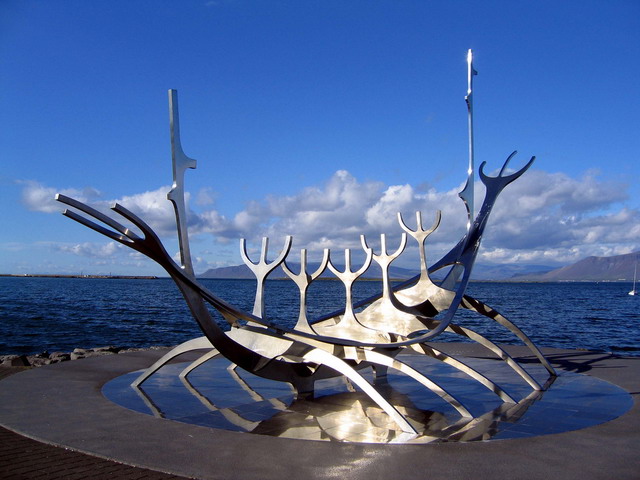
Hallgrimskirkja City Cathedral:
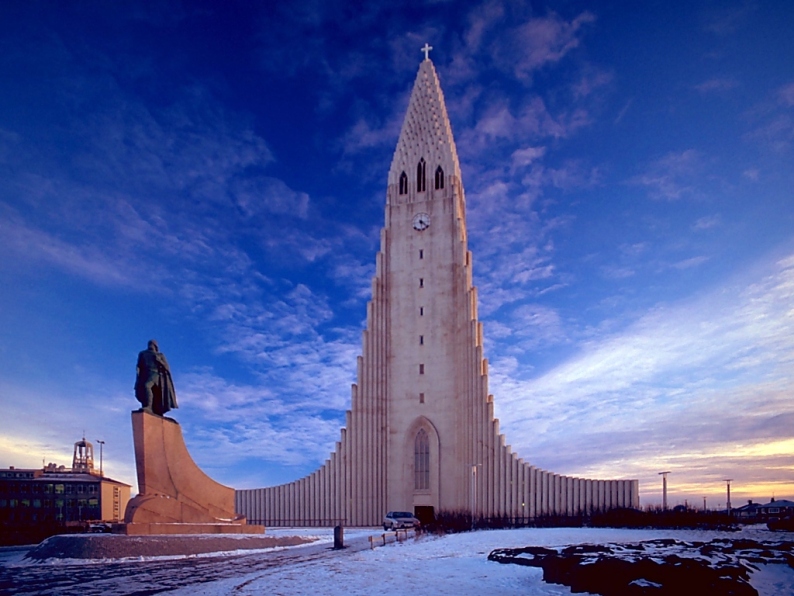
Evening Reykjavik:
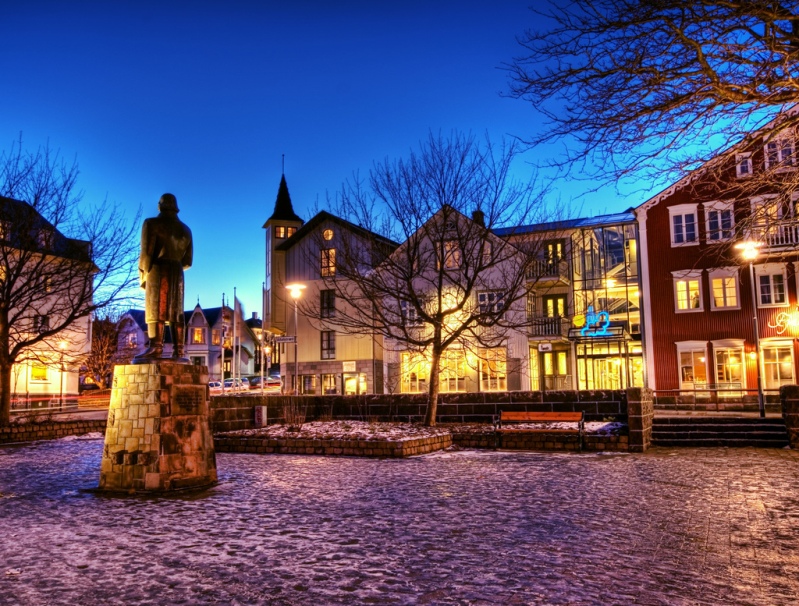
According to a 2007 UN study, Iceland was ranked as the best country in the world to live. The country's leading position was ensured by a record average life expectancy (more than 81 years) and a very high GDP per capita. There are practically no poor people in the country, and class stratification is very weak. Plus, Iceland is the cleanest country in Europe, because the state is heated from geothermal sources, which do not pollute the environment (any hot water - in heating pipes, taps, swimming pools, etc. - is of natural origin and slightly radiates sulfur).
The population of Iceland is small - 317 thousand people live in the country, with 65% of the total population living in the capital and its suburbs.
Life here flows smoothly, the population is mainly employed in the service sector, and fishing is also thriving.
Tourists come to Iceland for a quiet and comfortable holiday in harmony with nature: hiking in National Parks and in areas of volcanoes and glaciers, watching bird colonies and whales, horseback riding in vast flat areas. Patriots of Iceland made an unusual video about their country, the main goal of which was to increase the flow of tourists. The music theme of the video was the song “Jungle Drum” by the famous Icelandic singer Emiliana Torrini:
Volcanoes of IcelandIceland is famous for its volcanoes: the world-famous Hekla volcano and hundreds of other volcanoes are located here, because this region is located at the junction of moving lithospheric plates. Moreover, Iceland is the largest volcanic island in the world. In 2010, the famous Eyjafjallajökull volcano awakened here, covering Europe with clouds of volcanic ash, which caused air traffic to be blocked for some time.
Hekla Volcano has erupted more than 20 times and is considered the most active volcano in Iceland:
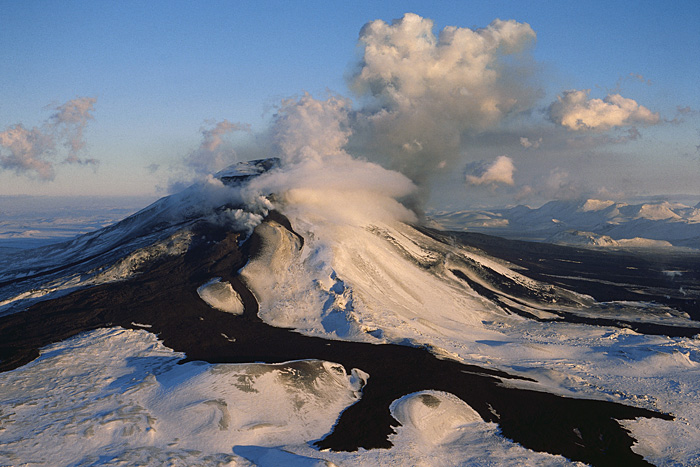
Eruption of Eyjafjallajokull volcano:
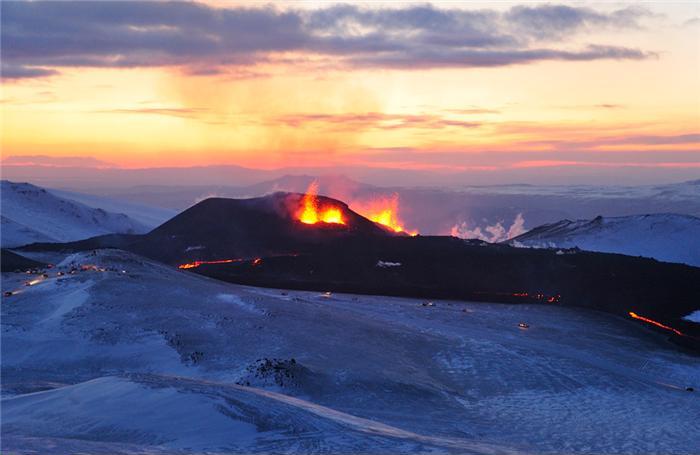
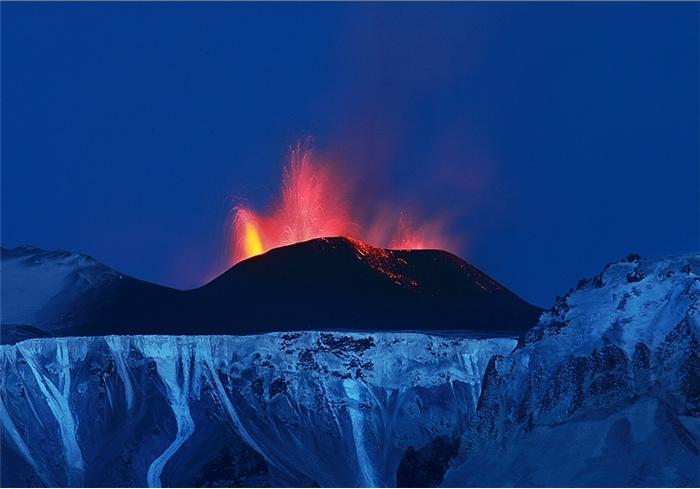

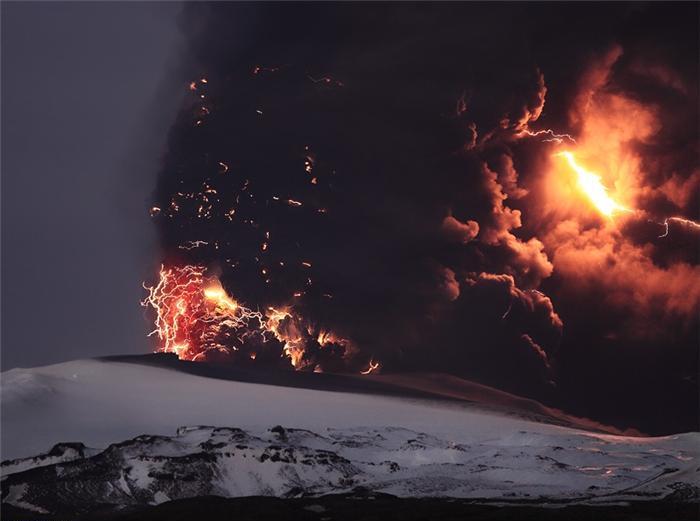

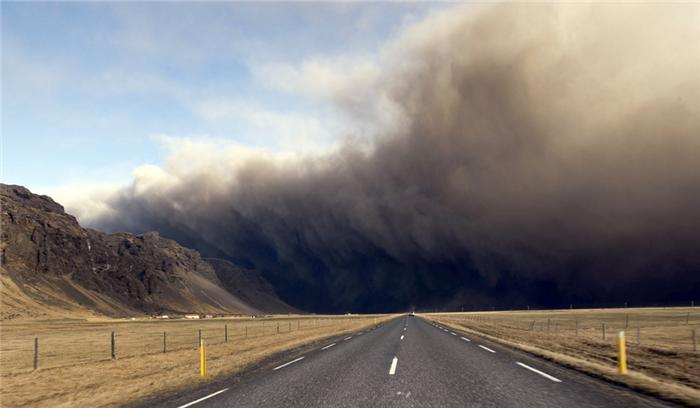
Lakes of Iceland
The lakes of Iceland are notable for the fact that many of them do not freeze all winter due to the abundance of warm springs at the bottom.

Such places are usually inhabited by numerous colonies of birds. In the north of Iceland is Lake Mývatn, famous for the abundance of trout in its waters and wild ducks on its shores. The lake in translation is called “mosquito lake” because of the huge number of midges above it, which, however, do not cause any harm to humans. There are more than 50 islands in the lake:
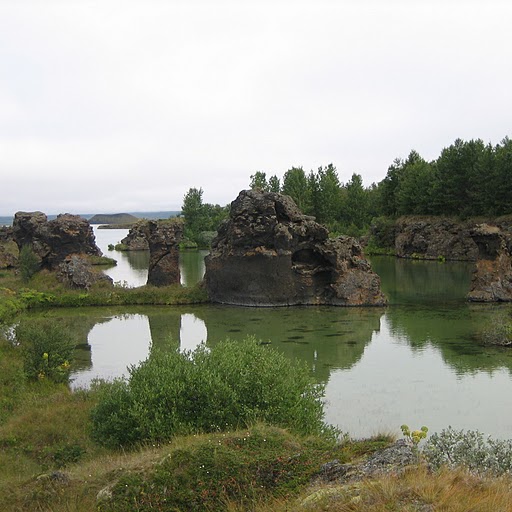
Unusual-looking lakes form in many craters of extinct volcanoes:



Hot springs in Iceland
The hallmark of Iceland is its hot springs. The ancient name of one of them - Geyser - spread throughout the world and became a household name. 100 km east of Reykjavik at the foot of the Langjökull glacier lies the unique valley of Haukadalur geysers, where this famous Great Geyser is located:

Within 10 minutes, the Geyser throws a stream of water 40-60 meters high into the sky three times in a row.
Big Geyser before releasing water:
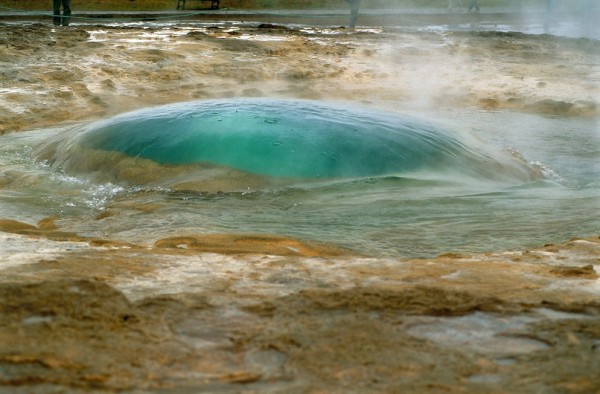
Geyser Shot:
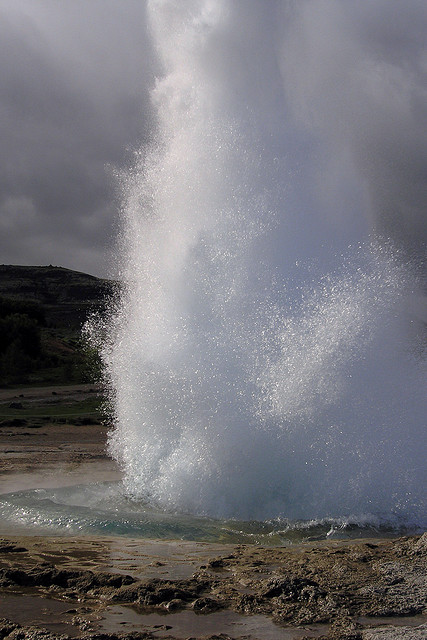
Getting too close to hot springs is dangerous - you can get burned, because... the temperature in them reaches 200 degrees.
Another large geyser is Strokkur:
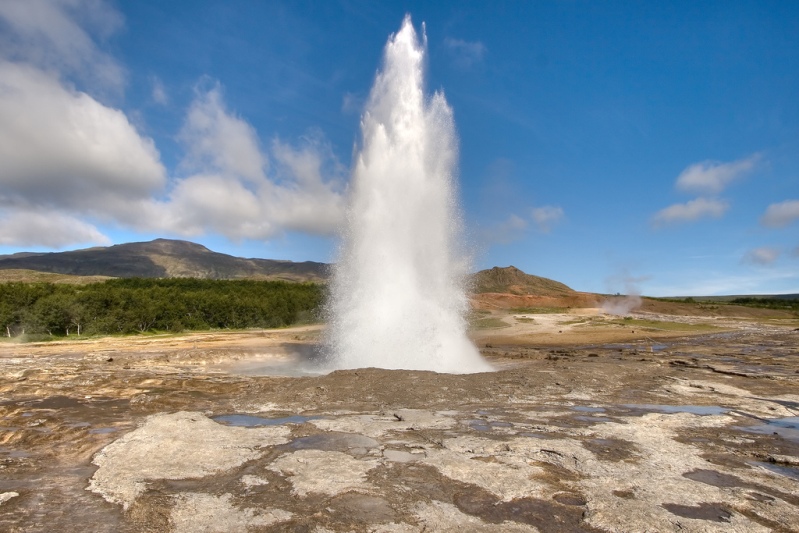
All tourists must visit one of the world's most famous geothermal resorts, the Blue Lagoon:
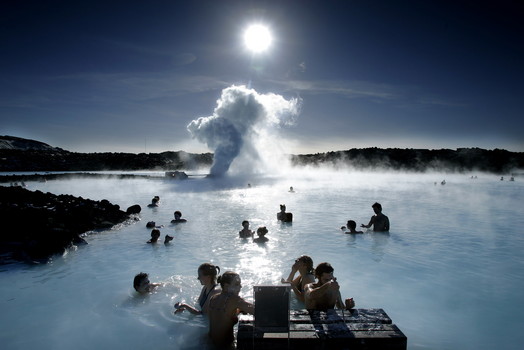
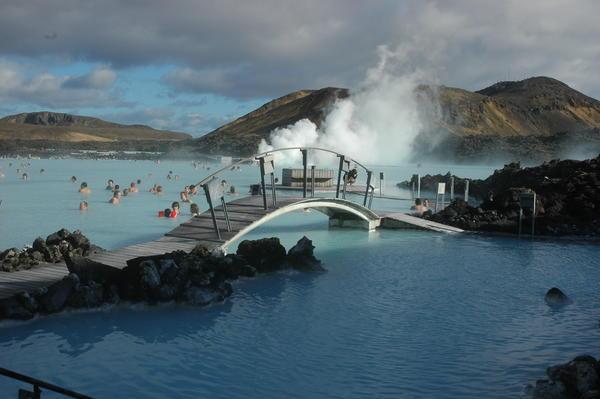

Due to the fact that the temperature of the island's interior is very high, Iceland has the largest number of hot springs in the world. In total, 250 groups of thermal springs are open in Iceland, including 7,000 hot springs.
Iceland waterfalls:
Iceland has many waterfalls. Here is the most powerful waterfall in all of Europe, Dettifoss, which is fed by huge glaciers in the middle of Iceland:
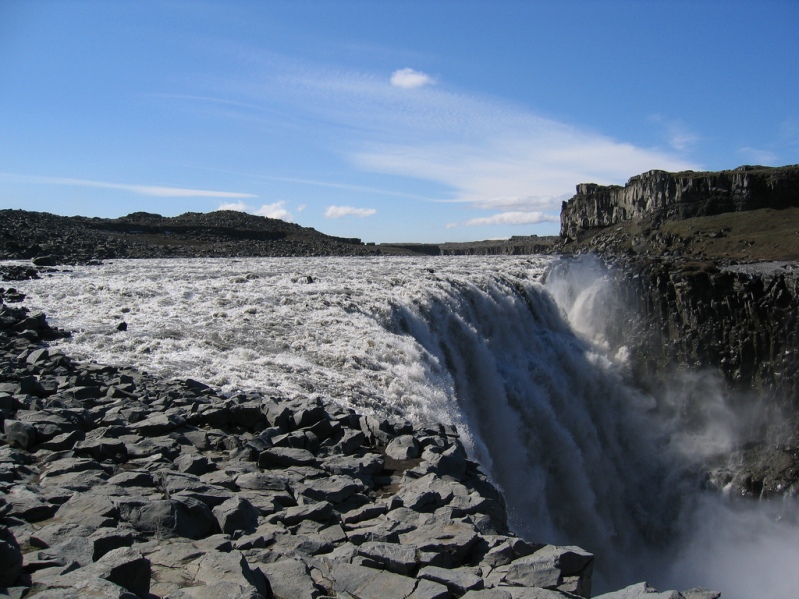
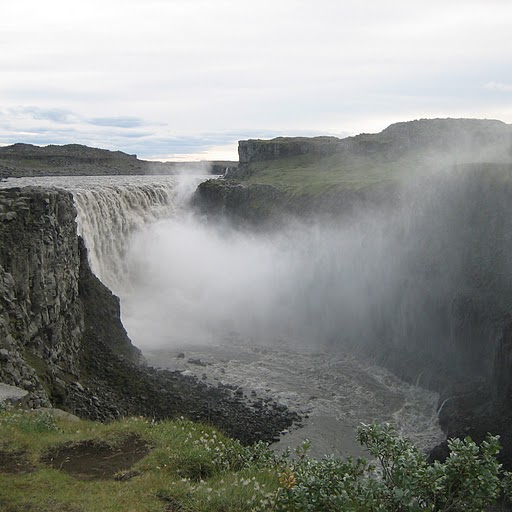
The Gullfoss waterfall (translated as Golden Waterfall) is considered the most beautiful of all:
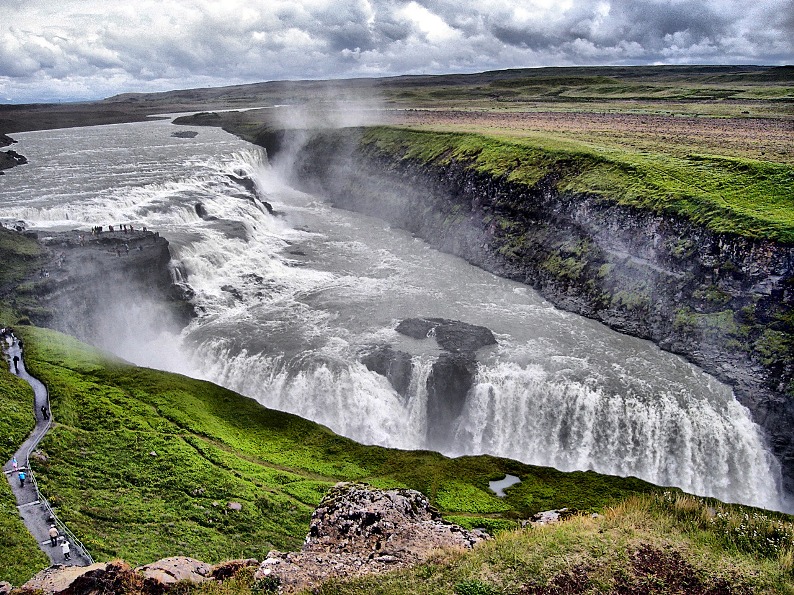
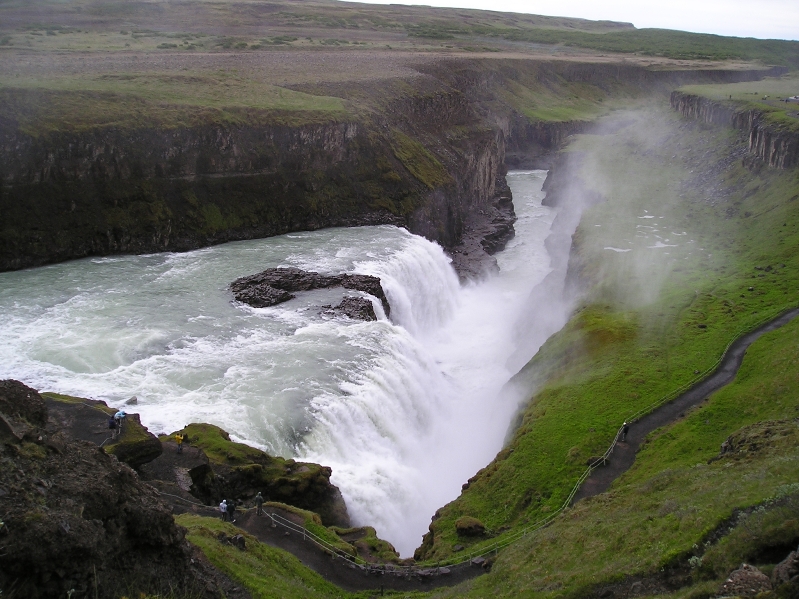
On the Botsna River there is the highest waterfall in Europe - Glumur (198 m):
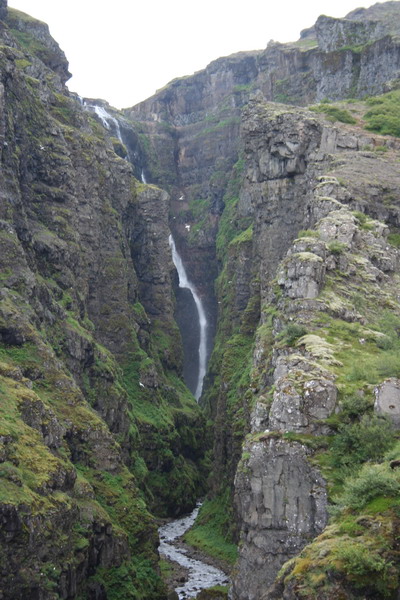
Svartifoss waterfall is located in Skaftafell National Park. It is surrounded by dark lava, which has frozen in the form of crystals:
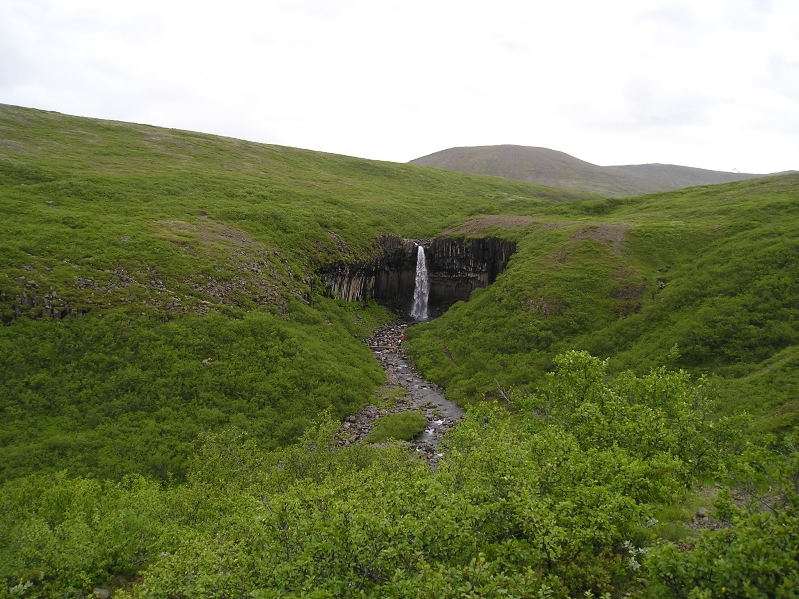
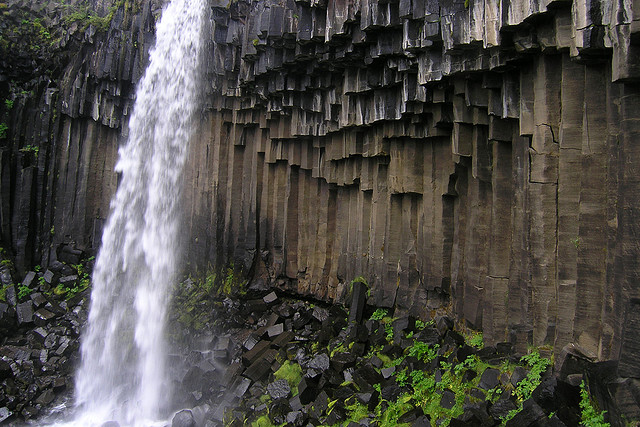
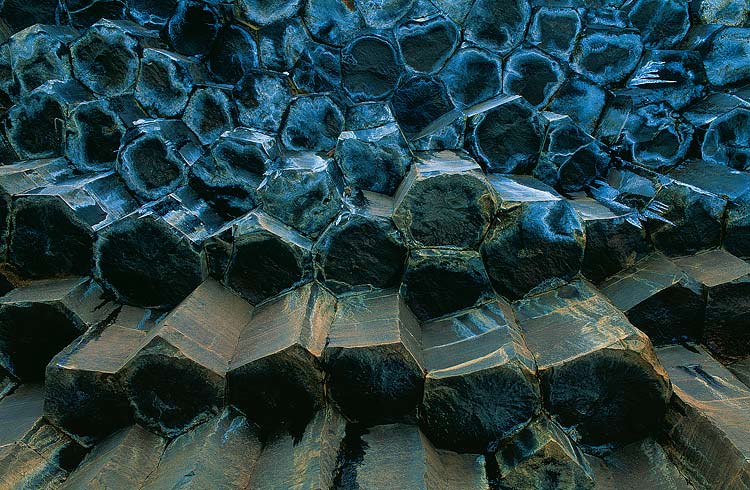
One of the most famous waterfalls in the country, Seljalandfoss (in the south of Iceland) is famous for its beauty. It falls from a height of about 60 meters above the cliffs of the former coastline:
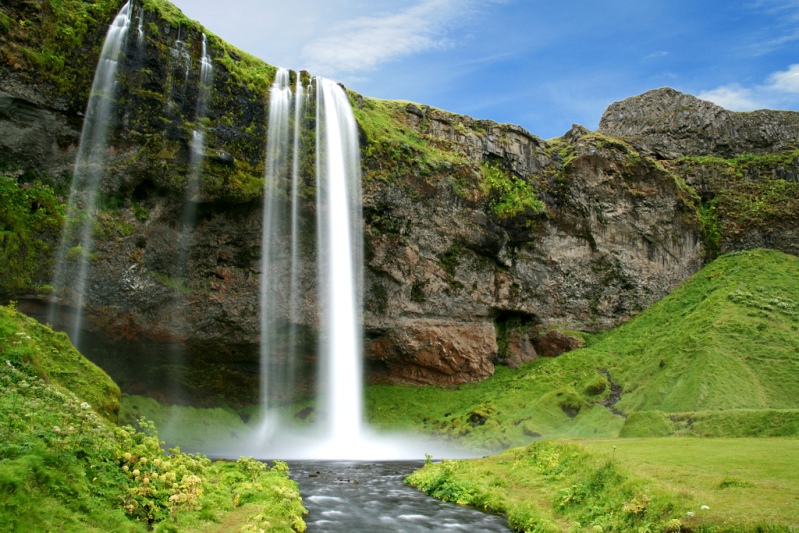
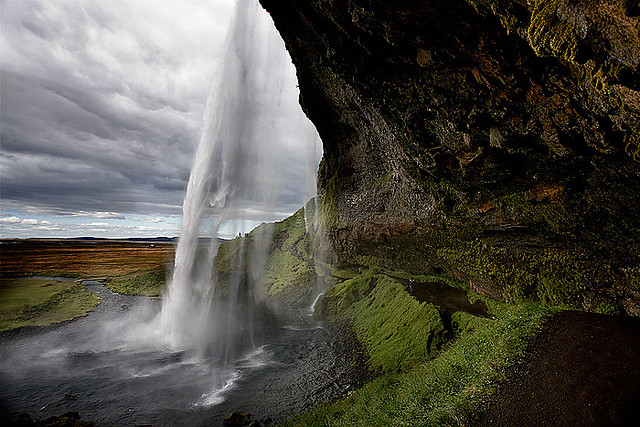
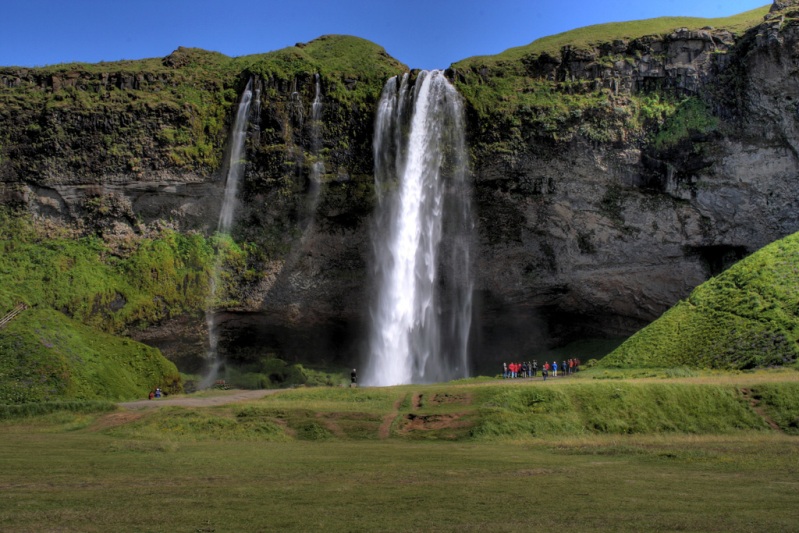
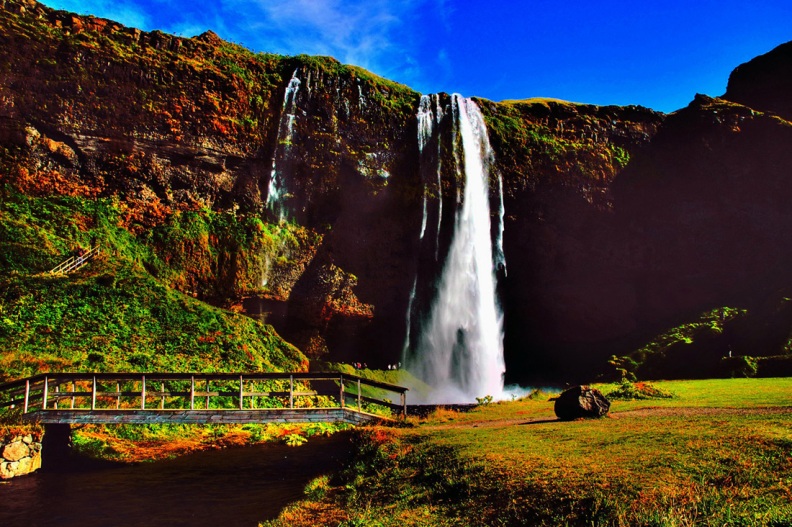
And also on the southern coast of Iceland, the Skogafoss waterfall is very popular:
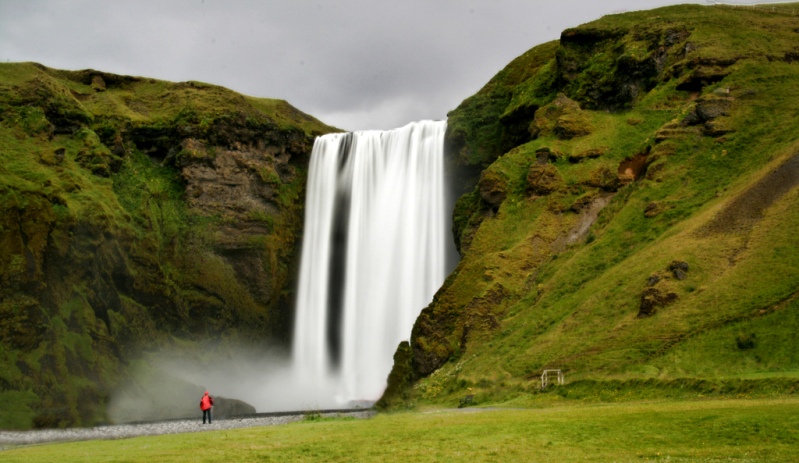
Of the small beautiful waterfalls, Godafoss (translated as Falls of the Gods) can be noted:
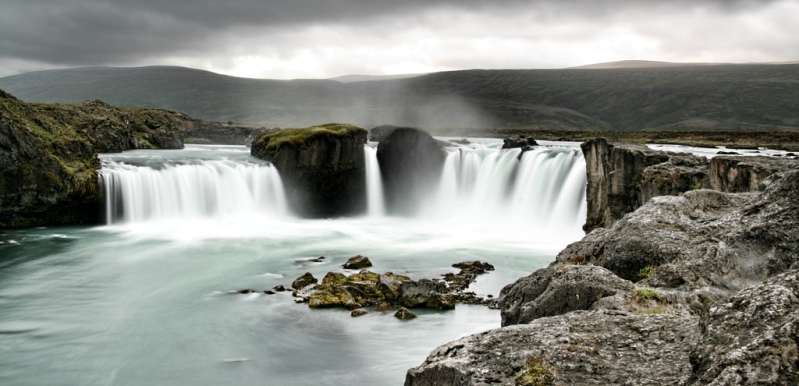
Iceland
About 10th of the island is covered by glaciers, but this does not prevent Iceland from having a fairly mild climate. It is noteworthy that Reykjavik (the capital of Iceland) is the northernmost capital in the entire world.
According to the UN, the most amazing country in the world is also recognized as the best place to live in the whole world. It was helped to achieve this position by its record life expectancy, which averages more than 81 years, and very high GDP per capita. There is practically no class stratification and no poor people.
The country is heated by geothermal sources, which allows it to keep nature virtually untouched without polluting the environment. This is one of the cleanest countries in the world. 317 thousand people live on the territory of the most amazing country, but about 65% are located in the capital and its suburbs.
Lakes and volcanoes
Tourists come here from all over the world to enjoy the wonders that Iceland has to offer:

Lakes. There are a lot of lakes in Iceland that, even in the harshest winter, do not freeze thanks to thermal springs. One of the most famous lakes is Myvatn, in whose waters there are a lot of trout, and on the shore - wild ducks. If you translate the name Mývatn, you get the word “mosquito” - a huge number of different midges fly over the surface, which, however, are harmless to humans.
Volcanoes. The most amazing country offers you to admire the world-famous Hekla volcano. In addition to it, there are many more dormant and active volcanoes. This is not surprising, because the country is located at the junction of lithospheric plates that are in motion. Iceland became famous in 2010 due to the Eyjafjallajökull volcano, which awoke and covered Europe with huge clouds of volcanic ash. Because of this, air travel was blocked for some time.
Hot Springs, Big Geyser
Hot Springs. The calling card of Iceland, without a doubt, is the hot springs. The famous name of one of them – Geyser – has become a household name. The most amazing country includes a valley of geysers called Haukadalur, it is located at the foot of the Langjökull glacier (100 km from Reykjavik) and has dozens of active geysers.
The Big Geyser is famous for the fact that within 10 minutes it throws a huge stream of water into the air three times in a row to a height of about 60 meters. Tourists are warned that coming close to the source is dangerous - the water temperature reaches 200 degrees Celsius.

Iceland is exactly the country where all the most amazing wonders are collected that cannot be found in other countries or continents.
This is a list of the most original countries that are specific because of their natural beauty, some because of their demographic characteristics, and some because of their tourism features. Only sovereign states were taken into account. By the way, on the website of the travel agency "Lena-Tour" information on tours is updated daily. Tours are offered all over the world. The website contains a fresh selection of tours, information about countries, and online tour selection. With Lena-Tour companies you can travel to any of the 9 countries listed below.
1. Country with 3 million lakes - Canada
Canada contains more than 60 percent of the world's lakes, so many that their exact number is unknown. In some regions, for every 100 sq. km there are more than 30 lakes.
2. A country with more than 17,500 islands - Indonesia

Indonesia consists of more than 17,500 islands with a total coastline of 81,350 km. Approximately 6,000 of the islands are inhabited. The largest islands are Java, Sumatra, Borneo, Sulawesi, Bali, Lombok and Flores. Indonesia contains 10-15 percent of the world's coral reefs.
3. Desert Country - Libya
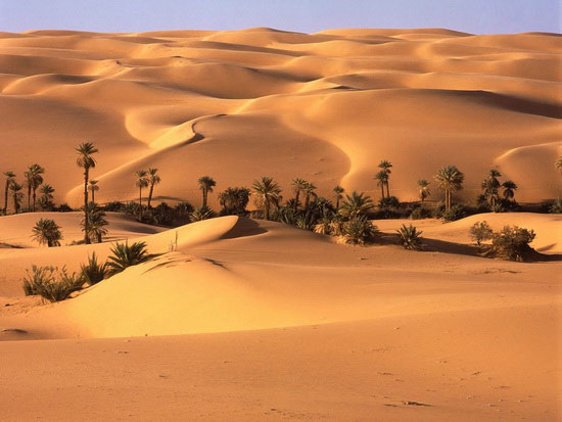
Libya is the country with the highest percentage of desert (99%). The Libyan Desert, which covers most of Libya, is one of the driest places on Earth. In some places, decades can go by without rain, and even in the highlands, precipitation is rare, once every 5-10 years.
4. The country with the smallest population density is Mongolia
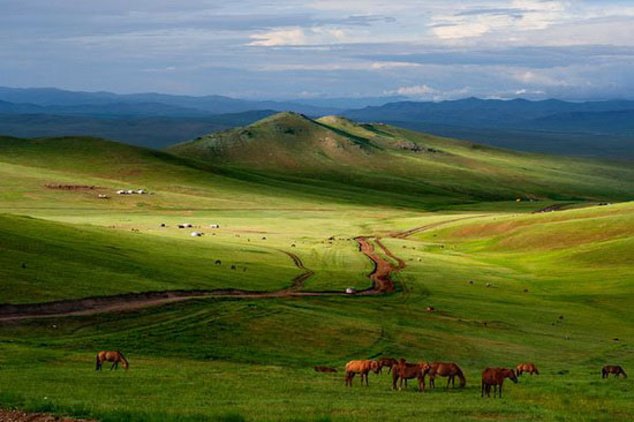
The country with the lowest population density in the world is Mongolia, with a population density of about 4.4 people per square mile (1.7 people/sq km). In Mongolia, 2.5 million people occupy more than 600,000 square miles of land (about 1,560,000 sq km). Much of this population lives in urban areas, as development of grazing land in Mongolia's vast deserts is difficult, particularly due to drought and dust storms, leaving some parts of the country almost as desolate as they were in Genghis Khan's time.
5. Country in the jungle - Suriname

The forest area is 14.8 million hectares (57,000 sq mi), representing 91% of Suriname's total land area (16.3 million hectares or 63,000 sq mi). Suriname's vast forest and low population, around 400,000 in the capital and coastal towns, give it one of the lowest deforestation rates in the world. Only 5 percent of the population lives in the rainforest, indigenous peoples and six tribes of blacks - descendants of fugitive slaves who recreated forest communities centuries ago and today retain their traditional West African style.
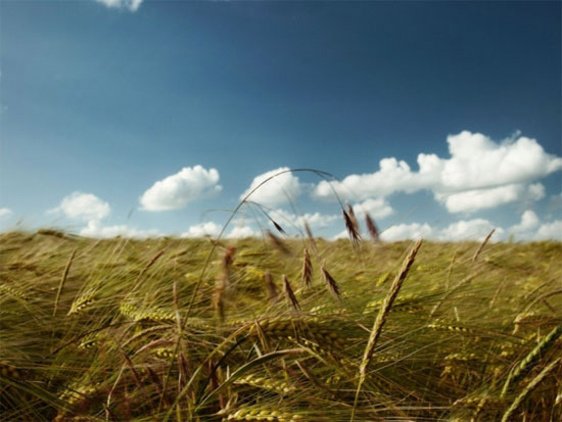
The country with the highest decline in fertility is Ukraine, with a natural population decline of 0.8% each year. Ukraine is expected to lose 28% of its population between now and 2050 (from 46.8 million currently to 33.4 million in 2050).
7. Country Below Sea Level – The Netherlands
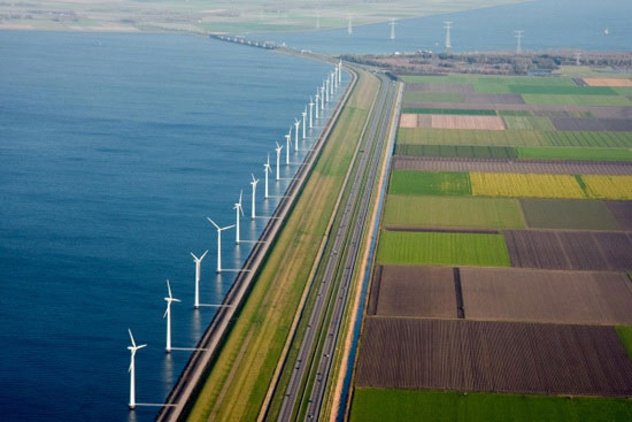
Half of the Netherlands' territory is below sea level. More than 60 percent of the country's population of 15.8 million people live below sea level. Only in the south of the Netherlands does the terrain rise to 30 meters or more.
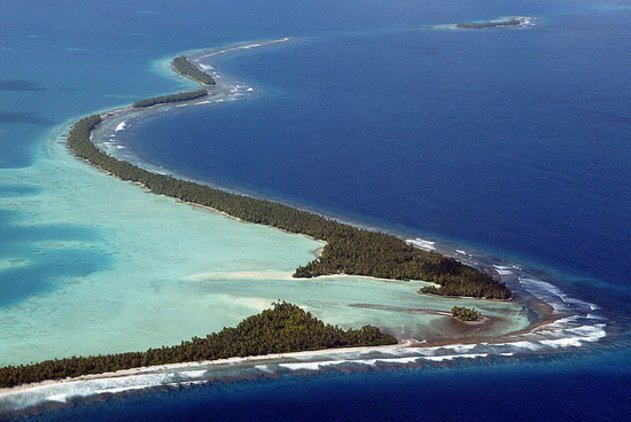
This is one of the smallest countries in the world. Tuvalu lies halfway between Australia and Hawaii and is predicted to be the first country to disappear underwater when global warming raises sea levels high enough. It is also very difficult to get to and very expensive flights from Fiji. A total of 1,100 tourists visit Tuvalu per year.
9. Country-continent – Australia
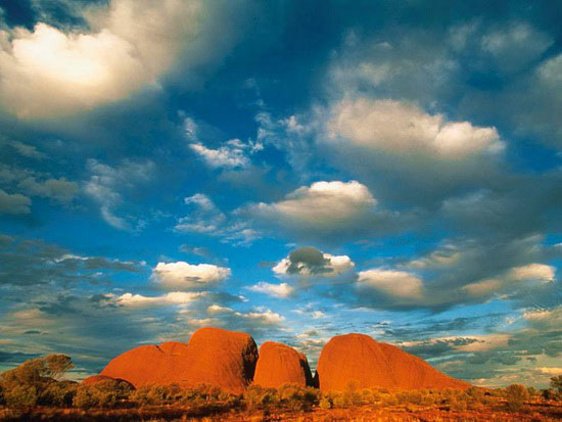
Australia is the only country in the world that spans an entire continent; every other continent has more than one country. This is the only country that is a continent, and the continent that is a country. It is the sixth largest country in the world, with a total area of 7,686,850 sq km (2,967,909 sq mi), slightly smaller than the 48 states of the United States and 31.5 times larger than the United Kingdom.
